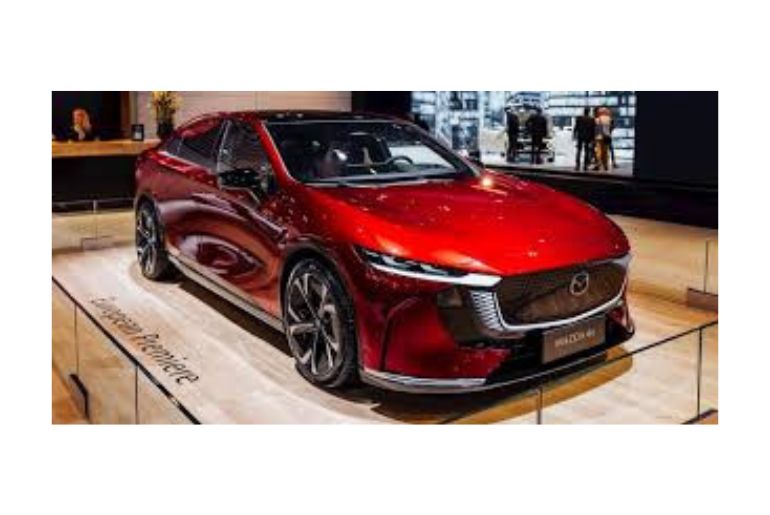Mazda has an EV, what? No, not just yet. The future electric vehicle would be manufactured in Japan, the company confirmed. Mazda hopes its first electric vehicle can overcome the “outrageous” 25% car tariffs imposed by the Trump administration, despite the fact that it will be manufactured in Japan.
In the face of US vehicle tariffs, Mazda prepares for its first dedicated EV.
Mazda said earlier this year that it would construct a new cylindrical lithium-ion battery cell module pack plant in Japan.
The modules and battery packs for Mazda’s first EV will be manufactured in Japan using battery cells from Panasonic Energy.
Its most advanced technology will be used to build the new electric vehicle at its Hofu H2 assembly factory, officials acknowledged for the first time this week.
Taketo Hironaka, chief of production engineering at Mazda, claims that the “cutting edge” technology would even enable the company to get around the recent US auto tariffs. “The 25 percent figure is outrageous,” Hironaka stated , adding, “We will control what we can.”
Instead of establishing a specific EV production line, the plant will maintain its flexibility to modify output as required.
Building petrol, diesel, hybrid and plug-in hybrid cars on the same line may save lead time by 80% and investment by 85%, according to Mazda.
The Japanese carmaker anticipates that all cars will be “electrified” by 2030, with pure EVs making up between 25% and 40% of worldwide sales. Hironaka claims that it is now closer to 25%.
Hironaka continued, “By doing mixed production, our BEV ratio will change according to customer demand at a given time. We may see a BEV ratio of 100 percent or it could be 0 percent.”
The new EV car will go into production by Mazda in 2027. Prices, driving range, and other specifications have not yet been disclosed by the firm. It appears that further information won’t be available until it is closer to launch.
Mazda announced the 6e, a worldwide model that will debut in Europe and other regions later this year, following the launch of its first EV, the EZ-6, in China. The CX-6e, the international variant of Mazda’s EZ-60 electric SUV that is offered in China, will come after it.
However, Changan Mazda, the company’s joint venture, manufactures both models in China. Mazda’s biggest and most significant market is the US. Like the majority of the car business, it will need to adapt to remain competitive.
With a number of new, more affordable, and sophisticated EVs expected to hit the US market in the coming years, Mazda is already in a precarious position. Can it improve things with its first dedicated EV? As everyone knows, the MX-30 EV was discontinued in the United States in 2023.

